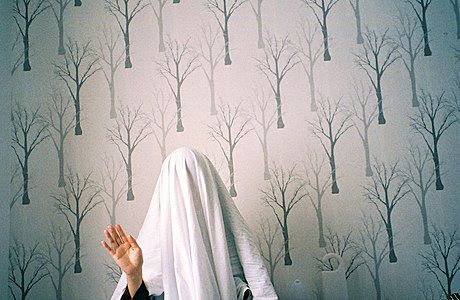Pacific Futures
After two Pōneke seasons, Tāmaki audiences can now experience Hone Kouka’s The Beautiful Ones. Madeleine de Young reviews the show and discovers a dynamic, joyful mihi to the future.
After two Pōneke seasons, Tāmaki audiences can now experience Hone Kouka’s The Beautiful Ones. Madeleine de Young reviews the show and discovers a dynamic, joyful mihi to the future.
It is a myth often recycled in Pākehā spaces that to be Māori - to fight for our language, our tikanga, our way of doing things - is a desire to live in the past, a rejection of the opportunities of the modern age and a reversion to a world without innovation.
Māori history tells us a different story of our past, of a world that was full of opportunity, with new inventions and entertainments ready for discovery. Our tupuna were voyagers and explorers. They travelled extensively, learning and absorbing information from the people they encountered. They invented things, dreamed, fought and created. Then their way of life was nearly obliterated.
To be ‘postcolonial’ is to live in a reality of ‘what if.’ What would te reo Māori sound like now if it hadn’t almost disappeared? What would our clothing look like if it hadn’t been bound by the corsetry of Victorian England? What does it mean to be Māori and young without the weight of generations of culture loss?
Tawata Theatre’s The Beautiful Ones, written and directed by Hone Kouka, feels like it offers some answers to these questions. It is a story of global Māori that is seated in the future, not our colonial past. Like our tupuna before, the rangatahi of this production are way-finders. They revel in the nightlife and the opportunities to kanikani, to sing and to wear flash clothes! The show was born on a dance floor in Amsterdam - half a world away from Aotearoa. A young Hone Kouka was revelling in the push, the pull, the pulse of 90s nightlife and experiencing - like many of us do when we travel beyond our own borders - a sense of decolonisation as the idea of what it is to be Māori, there, dissolves. Free from the politics of Aotearoa, to be Māori is exciting.
The Beautiful Ones is Ria Hall’s theatrical debut. She stands above the people - a goddess of the club, a siren whose powerful voice is celebrated both in Aotearoa and abroad. In this role, Hall isn’t far from her own reality. Indeed, her new single, ‘Love Will Lead Us Home’ is a featured track alongside the sounds of K*Saba, Tama Waipara and Sharn Te Pou. The Lady is a diva, an ephemeral force to Scotty Cotter’s The Lord - the kaumatua of the club. Ruling from above, their years of running the party are drawing to a close and they’re ready to pass the mantle on to the cheeky young ones below.
The Beautiful Ones features an ensemble cast bursting with talent: the lovers (Tia Maipi and Manarangi Mua), the dancers (Paige Shand, Raai Badeeu and Te Hau Winitana), the rising star (Sharn Te Pou) and the leaders in waiting (Mapihi Kelland and Braedyn Togi). They invite you in to share their space, to dance with them, to take pictures or to live stream. This open invitation and the fact that The Beautiful Ones so boldly blends genres sets the work out as unique against much New Zealand theatre. In this environment, the disregard for the fourth wall feels like an extension of manaakitanga, and in an ultimate rendition of the show I can picture members of the audience standing up to karanga or whaikōrero back to the performers on stage.
That being said, I cannot see this happening in this particular season of the show. In 2014, The Beautiful Ones held a development season during the Putahi Festival in Pōneke. In this season the show was larger, the story uncontained. It roamed with the audience who walked between performances spaces and who therefore couldn’t avoid being part of the performance.
In 2016, the show is certainly slicker, louder, and the story has been stripped back for greater impact. The set is split between the land of the Lord and Lady above and the ensemble below. A series of projections of street scenes and Māori art move across the screens which also serve as areas to play with shadow and reflections. This makes for stronger staging, less emphasis on narrative and more on the image. However by moving from a roaming site-specific performance to one with cabaret seating, The Beautiful Ones has inadvertently cut off a connection with its audience. While the cabaret seating style may break us out of end-on lines, it still firmly keeps us in our seats as seat legs butt up against each other, blocking the path to jump up and dance.
As I sat there - stuck in my own seat between the safety barrier and the chairs of the people around me, my own ‘what if’ began to creep into mind. What if a performance space was informed by te ao Māori as opposed to te ao Pākehā? What would that look like? The show is such a strong exploration of kaupapa Māori that it demands a space flexible and inviting enough to hold it in.
The vision of Pacific futures that The Beautiful Ones explores is unique and greatly welcome. This is a celebration; an urban marae in a dance club. It’s an exploration of te ao Māori lived in song and in movement and it’s young, rough and experimental. All this combined makes The Beautiful Ones a joyous experience.
The Beautiful Ones is at
Lower NZI, Aotea Centre
18 Nov – 26 Nov
Tickets available here

